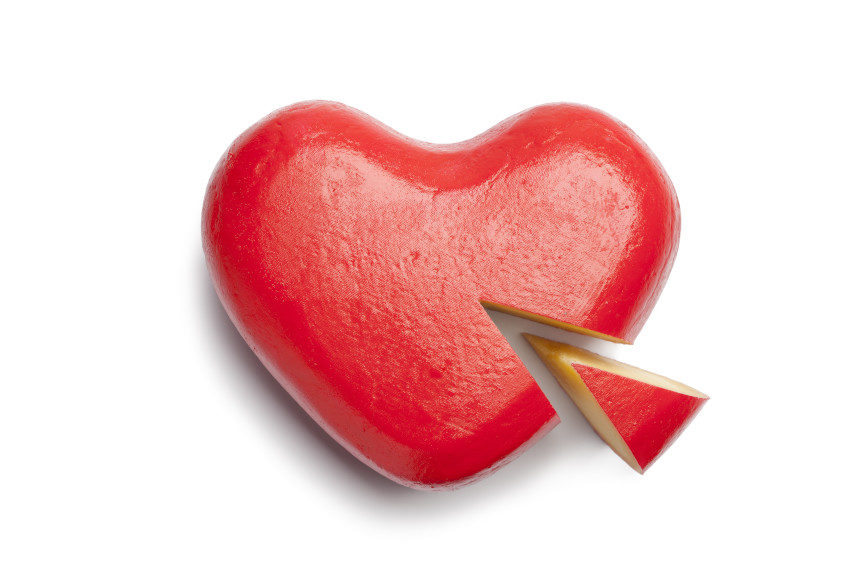“Your Health Checkup” is our online column by Dr. Douglas Zipes, an internationally acclaimed cardiologist, professor, author, inventor, and authority on pacing and electrophysiology. Dr. Zipes is also a contributor to The Saturday Evening Post print magazine. Subscribe to receive thoughtful articles, new fiction, health and wellness advice, and gems from our archive.
Order Dr. Zipes’ books, Bear’s Promise and Damn the Naysayers, A Doctor’s Memoir, and check out his website http://www.dougzipes.com.
Despite liking dairy products such as cheeses, I have generally refrained from eating too much because of a potential cardiovascular risk from the saturated fats. Surprisingly, a recent study of 4150 Swedish adults followed for 16.6 years, including an analysis of similar studies, found that higher intake of dairy fat from foods such as cheese, yogurt, milk, and butter was associated with a lower cardiovascular risk.
But before you go out and overindulge in Camembert and Roquefort, remember an association does not prove causation, and such foods may be risky for those with established coronary artery disease. Your risk for coronary artery disease can be evaluated by a heart scan that analyzes the presence and extent of coronary artery calcium (CAC).
Calcium accumulates in the body at sites of chronic inflammation, stress, and cholesterol plaques. Imaging calcium can pinpoint those areas, establishing risk when calcium is found in the coronary arteries. The presence and amount of CAC, determined by computed tomography (CAC score), has become a relatively simple but powerful noninvasive indicator of risk for acute coronary problems.
But, like many things in medicine, interpreting the results of the CAC score can be complicated because not all plaques are equal. Calcified plaques are generally safer than non-calcified plaques because they’re more stable and less prone to rupture and occluding blood flow in a coronary artery to cause a heart attack.
For example, among a group of patients with stable chest pain and suspected coronary artery disease, a third had a CAC score of zero, yet about 14 percent of those had evidence of coronary artery disease and potentially unstable plaques that were non-calcified. Also, those individuals with high CAC scores — known to be predictive of unfavorable outcomes — had a substantial amount of non-calcified, high-risk plaques, which are more likely to cause heart attacks and death. Thus, the risk in patients with a low CAC score may still be elevated while the risk in those with a high CAC score may come from noncalcified unstable plaques that accompany the calcified plaques.
Interestingly, people who exercise regularly — an activity that unquestionably reduces total and cardiac mortality along with providing multiple other health benefits — develop increased CAC deposition. A recent study of 25,485 Korean people found that the more individuals exercised, the greater the prevalence and progression of CAC, probably because “exercise CAC” results from the mechanical stresses on the coronary arteries. However, the clinical implications of having “exercise CAC” are very different than CAC buildup in sedentary folks because a calcified plaque is less likely to leak or rupture, and therefore less likely to shut off blood flow in the coronary artery and cause a heart attack.
So, continue to perform 150 minutes of moderate (brisk walking) exercise, or 75 minutes of intense (jogging) exercise, per week. A recent study found that 7,000 steps per day reduced all-cause mortality in middle aged adults, regardless of step intensity, sex, or race
The take home message is that CAC imaging is useful to assess coronary risk, but the results must be interpreted carefully. It seems okay to eat dairy products, especially if you have a low CAC score, but I would suggest doing so in moderation.
Featured image: Shutterstock
Become a Saturday Evening Post member and enjoy unlimited access. Subscribe now




Comments
Dr. Zipes, the cheese industry is (and has been) out of control in the United States since the 80’s, getting worse and worse every year. They’ve brainwashed the largely naive American public that a meal NOT loaded with cheese is “incomplete” somehow.
As this industry has grown, so has the obesity epidemic. Think about it. Whenever there are reports ON this epidemic, the cheese industry is never called out on their major role in it, and with the high amounts of bad cholesterol, heart attacks and strokes increasing along with it.
Double, triple, quadruple cheeseburgers! The very word ‘hamburger’ has been completely replaced by ‘cheeseburger’. On the rare occasions I go through the drive-thru, I have to specify ‘no cheese’ and repeat it a few times. Wendy’s is so bad, I’m surprised there isn’t cheese coming out of the drink dispensers.
It’s probably most out of control on pizza. No one ever said pizza was a ‘health food’, but it can be a lot less unhealthy and be really delicious. Dominoes makes (me) a great medium gluten-free thin crust vegetarian lite on the mozzarella, but with some extra sauce. I’ve converted various friends who thought pizza has to be loaded with cheese and pepperoni to be a ‘real’ pizza. No it does not, and it’s been a huge hit!
I’m not crazy about ham & pineapple on a pizza, but it’s better than anchovies. I took one bite one time; never again. You might as well pour and entire container of salt all over it. THAT plus overkill cheese? When my sister’s sons were 6 or 7 and and she’d have a pizza birthday party in the local park, the 100% cheese pizzas were the only one’s those kids would eat! She’d order a couple of boxes of the kind I liked, and I never had to worry about them eating any slices of those.
The cheese industry is a huge problem in this country Dr. Zipes, and they need to be exposed. They won’t, but they need to be. By the way, Amy’s makes a scrumptious cheese-less roasted garlic pizza you can bake at home. I know Sprout’s and other stores carry it in their frozen pizza sections.